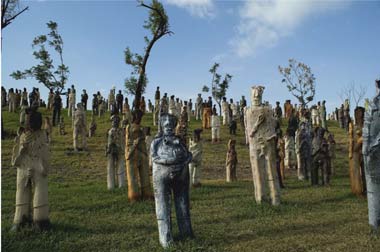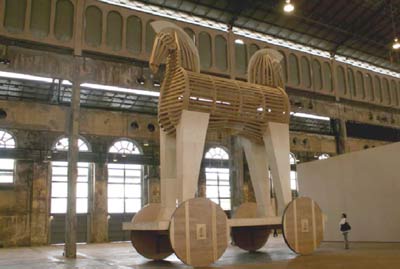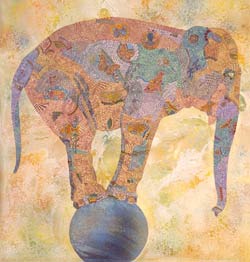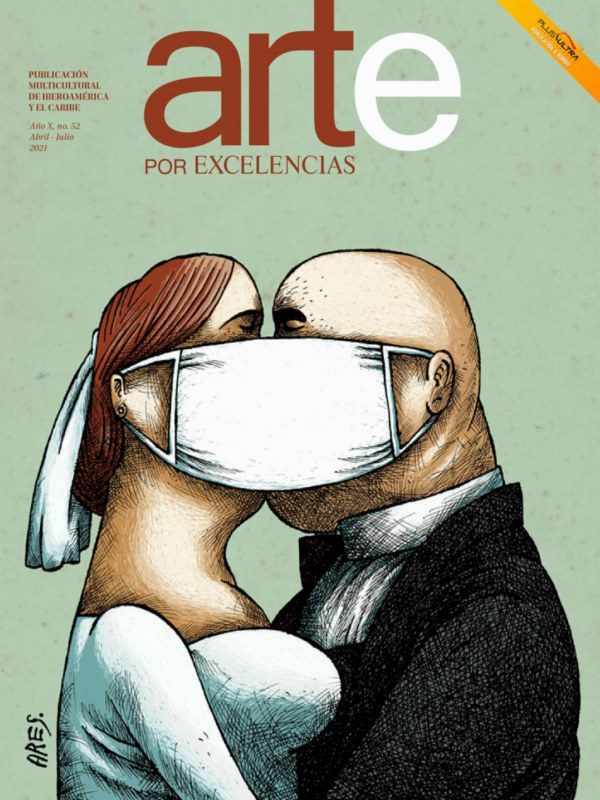Based on a minimum registration of seven Mexican artists’ recent work, the factors fostering the different ways of perceiving, interpreting and reinterpreting art are explored here. Every gesture brings a world up, every action entails the desire of giving an order to the continuous and complex human experience; every thought works as a resource to specify the perception. Every word –in the continuous conversation that each life is– points out our possibilities to build ways in order to enhance our freedom.
The works included in this dossier reflect on the resources of languages game, resources which moralize the comprehension and favor an exegesis on the perception as human experience: the links among individuals and collectives, relations between the economy and policy of a society, personal identifications, expectations, desires and promises, a framework where the daily routine gets broken, from a process of physical and cultural displacement which entails a change of look.
 2501 INMIGRANTES
2501 INMIGRANTES
(Talismans against lack of pertaining)
The Mexican artist Alejandro Santiago was born in Teococuilco, Oaxaca, and he later on moved to the city. Upon returning to his town, after 30 years, he realized there were 2 500 souls missing in the community: more than half of the population had migrated to other areas in Mexico or to the United States. The phenomenon happens to be usual at the entity, which is afflicted by poverty and lack of employment. People migrating and looking for jobs, betters incomes and public services. Women, children and the elderly remain in the towns, waiting for remittances sent by migrants. Sometimes, what they receive are the corpses of their relatives, the death of their hope.
Just some children and the elderly stayed in Teococuilco. The houses built with the remittances sent by migrants were empty, there were streets without people. The border is large, and Mexico has been in a difficult position for many years on its relation with the United States. A country whose official sources of information recognize that 40 percent of its population lives below poverty rates, bounds with one of the biggest economic and politic powers in the world, all over 3 000 kilometers of dividing line.
I. During a seminar carried out in 1992, Humberto Eco and Richard Rorty held a pleasant polemic on textual interpretation criteria. Eco explained the possibility of finding limits which define a suitable comprehension, and he believed that there are interpretations which use the text taking advantage of its elements’ possibilities so as to produce meanings. Richard Rorty underlined the idea that any reading of a text, an image or any object, entails itself the use by the observer, and the interpretation is always contingent, historical, it brings up the emergency of an observer and the community he’s part of.
Paul Waztlawick and Meter Krieg, in the book El ojo del observador (The observer’s eye), compiled a series of studies precisely dedicated to explore the mechanisms of perception and the implicit look, their ties with the mind and the contextual, historical and affective conditions where they are applied. Those conditions influence the look and they also make possible the emergency, in different ways, of the observer … From understanding the interpretation as a result of local operation rules we’ve evolved to the notion of comprehension, assimilated as global coherency of a system, what some researchers call: synergy, emerging properties or networks’ dynamic. From this perspective we can understand why the perception occurs, in a first stage, as a process of individual preparation, even before been in front of the object to look; so the interpretation involves a complex personal strategy which has to do with our “desire” in the first place and later with the objects or images in the world. Then the look takes place as a process of discovery of oneself, participating in an experience, a kind of appearance or emergency of a first person. We describe an interpretation as correct when we find a behavior adjusted to the context in which we observe the object, and it allows us to keep a coherency with the circle where we are.
TOY HORSE / TROYA HORSE
 The Mexican artist Marcos Ramirez (Erre) represents the horse of Troy’s legend, adjusted to the present reality with references to the migration and globalization. The two-head horse, made with natural wood, is the image of the “encounter”. When he exhibited in the biennial São Paulo-Valencia, he wanted to simulate the cultural clash between Europe and Latin America. Of course, in both sites his use and interpretation were right, as Erre considers the artwork a metaphor of the invasion (according to the original function of Troy’s horse), but “in this case, it’s about an invasion to both sides”.
The Mexican artist Marcos Ramirez (Erre) represents the horse of Troy’s legend, adjusted to the present reality with references to the migration and globalization. The two-head horse, made with natural wood, is the image of the “encounter”. When he exhibited in the biennial São Paulo-Valencia, he wanted to simulate the cultural clash between Europe and Latin America. Of course, in both sites his use and interpretation were right, as Erre considers the artwork a metaphor of the invasion (according to the original function of Troy’s horse), but “in this case, it’s about an invasion to both sides”.
II. If the perception in art offers a use for objects which alters their condition of signs and produces new sensitive configurations; if it invents ways to look allowing the access not to what the world is but what is sensed, what is needed. If the look discovers the imperfection that origins the speeches, if it invents ways to live the strength of our own desire building a world with other people; then the tension among looking-thinking-knowing can offer some possibilities to understand our own existence.
LÁGRIMAS NEGRAS
Betsabe Romero is a key artist in the horizon of contemporary art in Mexico and abroad. Her critical reflection in this work on the implications of the object named rim or tire, has long range. It’s about the dialectics of hierofanta, where an object remains the same one and, however, it’s another one. Due to her interest on the identity, migration, environment, history and her constant references to Mexican culture and art; her ordinary objects are transformed into extraordinary objects, opening unexpected dialogues among crafts tradition, decorative inheritance and contemporary art in the country and abroad.
III. The joint of certainties and believes which define a community represent its explanation on the world and the human experience. Scientific culture, as every believes system has its own criteria. Our believes system, as well as the phenomenon we call knowledge, depends on our own structure as living beings and the history of our specie, depends on the ways human beings exist and carry out every action. The history of our specie, on the other hand, belongs to the processes of our planet.
VELLOCINO DE ORO
Daniel Romero explores the ludicrous vision of childhood as allusion to the critical child-witness vision of a cruel and lovely world. With the reference to classic myths, such as the Golden Fleece (versus American dream), he proposes a present reflection on the relation between Latin American people and the United States in the so called American Dream.
STEPPING STONE
David Garza builds and rebuilds the human condition from natural landscapes. Elephants balanced on spheres lead us to think in a world whose load is not only the weight of history but men’s responsibility on their environment. The balance, internal as well as external, is one of the topics mixed with this reflection on a personal and collective conscience related to the experience of living in this place, the awareness of our responsibility on the emotions generation, as well as the ethic connotation of our actions as specie.
IV. Through different vehicles such as photography, video, installation, among other, we can find artists whose works propose an universal reflection. Among the emerging ideas we find out that the planet’s inhabitants work out as a single individual. That’s why the trace left by human beings in the planet, specifically by the construction of their habitat, includes the construction of cities and the complex urban planning which understands public spaces as coexistence sites.
BIENVENIDO A NUEVA AMÉRICA
The work of Ruben Gutierrez, Mexican artist, is an autonomous machine which exfoliates this common road of show, with the ironic conscience, perhaps pessimist, that neither the revolution nor art have offered an answer or convincing action regarding to the omnipresent alienation of the capitalist society. Nevertheless, on his artistic work Ruben denounces and shows us that imperceptible separation in the contemplative inactivity which immerses us under our auto-representations.
V. The existence of an autonomous micro-community –a bloc of Latin American countries– to the interior of a space, a territorial occupation, illegally appropriated by groups of families who share sub-urban lands which common topic is, for instance, football. This situation demands an automatic updating of the show in the social activity framework.
As human beings, we only have the world we are able to build with other persons. Any act inhibiting the acceptation of other persons, such as discrimination or the certainty of having the truth, limits the social and human phenomenon, destroys the possibilities of building a world where the experience of freedom can be possible. If the world where we live is built by other people, then it’s possible –just like Richard Rorty proposes– to maintain the utopia of solidarity through the capacity of seen strangers as friends. ver a extraños como compañeros.
Publicaciones relacionadas

Lo más destacado de la cultura en Iberoamérica en 2025: hitos para recordar
Diciembre 29, 2025















